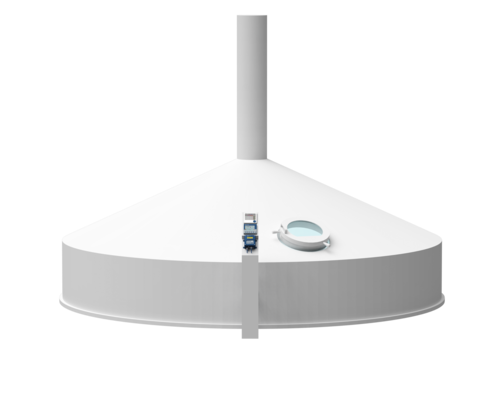

Brewhouse control system
Our system, which is based on the JUMO variTRON and JUMO variTRON Program Editor, enables the autonomous control of mashing, lautering, and wort boiling. This way, the next batch can be mashed while the wort is boiling. At the same time, all the necessary data such as temperature, pressure, pH value, flow, and stirring speed is monitored and recorded using JUMO smartWARE Evaluation.

Mash tun
When creating the mash in the mash tun, precise temperature measurement and control is crucial. Here, the malt-water mixture undergoes a defined temperature-time program so that the starch in the malt is broken down into sugar. Highly precise control of the temperature enables a high yield of sugar in the process.

Lauter tun
During the lautering process, the husks of the malt, the spent grain, are separated from the wort. Here, the spent grain acts as a filter. The mash is pumped and recirculated in the circuit until a filtration layer has formed from the husks. The agitator is controlled using the pressure differential so that the filtration is efficient.

Wort boiler
Boiling the wort extracts aromatic components from the hops. At the same time, any components that could result in a bad taste in the beer are evaporated. This frees the wort from other substances in the lees that denature and separate at high temperatures. The positive side effect of boiling the wort is that the wort is sterilized.

Wort cooler
After clarification in the whirlpool or through filtration, the wort must be cooled down to fermenting temperature as fast as possible. Here the parameters of time and temperature are also extremely important. The rate of flow of the wort is controlled by the wort temperature. The warmer the wort, the more slowly it flows through the cooler.

Fermenting and storage tank
During fermenting, the wort is mixed with a certain amount of yeast cells. At the beginning of the fermenting process, the yeast is aerated well and subsequently fermented at a temperature that is optimum for the yeast. During subsequent storage, the yeast is harvested and the green beer is stored at a particular temperature and for a defined period depending on the type of beer.





